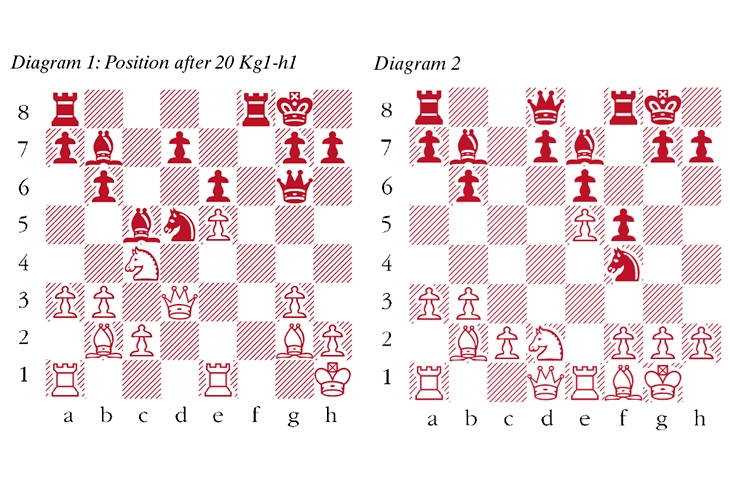I own a few chess books that could serve as a murder weapon, but none so hefty as Chess: 5334 Problems, Combinations and Games. Nicknamed ‘The Brick’ by its fans, its thousand-odd pages forgo instructional text in favour of an escalating procession of puzzles, mostly mates in 1, 2 or 3 moves. These illustrate the most important patterns in chess, which form the vocabulary of any skilled player. This is a primer with a pedigree: the book was written by Laszlo Polgar, the father of the famous Polgar sisters, who believed that geniuses are made, not born. The manifest effort of compilation demands commensurate exertion from the reader.
Later in the book, sections are dedicated to positions where the critical blow lands on squares near a Black (or White) castled king: g7 (g2), h7 (h2), and so on. It is a useful but crude classification, and I fancy that I might one day attempt a better one, approaching the task with the earnest zeal of a Victorian lepidopterist. One weighty subdivision will comprise attacks with a distant bishop on the long diagonal, and another with a proximate knight on f5 (f4). Even the intersection of these themes offers a profusion of tactical concepts (see diagram 1).
The first diagram shows an attractive specimen from a recent online blitz game: Black to play and win. The winning move was played by Dominic Lawson — a former editor of this magazine and the current president of the English Chess Federation. White is under pressure, which he hopes to relieve by exchanging the queens. The move 20…Nf4!! destroys that hope, a vibrant fork against Qd3 and Bg2, enabled by the pin on the g-file and a striking diagonal crossfire. Dominic was kind enough to share the game with me:
NN–Dominic Lawson
Internet blitz game, 2020
1 d4 e6 2 Nf3 c5 3 e3 Nf6 4 Bd3 Nc6 5 b3 Be7 6 Bb2 b6 7 a3 Bb7 8 Nbd2 O-O 9 O-O cxd4 10 exd4 Nd5 11 Re1 Nf4 12 Bf1 f5 13 Ne5 Nxe5 14 dxe5 Qe8 15 g3 Qg6 16 Nc4 Nd5 17 Bg2 f4 18 Qd3 fxg3 19 fxg3 Bc5+ 20 Kh1 Nf4!! 21 Bxb7 There is nothing better: 21 Qxg6 Bxg2 mate, or gxf4 Qxg2 mate, or Be4 Nxd3 and White’s bishop is pinned! 21…Nxd3 22 cxd3 Rab8 23 Be4 Qg4 24 a4 Rf2 White resigns
But let’s return, as Dominic did, to the position after 14 dxe5 (see diagram 2).
White’s kingside looks secure, so Qd8-e8-g6 could not be more natural. But a dramatic combination was already available, showing the potency of the Bb7/Nf4 duo. Black could improve with 14…Bxa3!! The point is that 15 Bxa3 Nh3+! 16 Kh1 (or 16 gxh3 Qg5+, with mate next move) Nxf2+ wins the queen. White could try 15 Bd4, to meet Nh3+ with 16 Kh1, since f2 is defended. Then Black plays 15…Bb2!, in hot pursuit, which costs White further material since 16 Bxb2 Nh3+ wins as before.






Comments